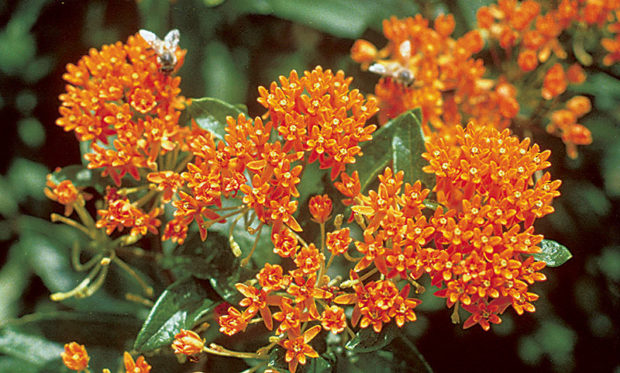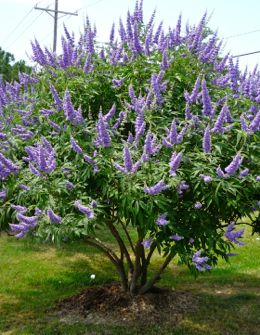How To Grow A Butterfly Bush Tree That Attracts
Title: How to Grow a Butterfly Bush Tree That Attracts
Introduction:
Butterfly bushes are a popular choice for gardeners who want to attract butterflies to their yard. These shrubs are known for their long, showy blooms that come in a variety of colors, including purple, pink, white, and yellow. Butterfly bushes also have a sweet nectar that butterflies love.
If you're thinking about planting a butterfly bush in your yard, there are a few things you need to know. First, butterfly bushes need full sun and well-draining soil. They can tolerate a variety of soil types, but they will not do well in wet soil.
Second, butterfly bushes are relatively easy to care for. They need to be watered regularly, especially during hot, dry weather. They also benefit from a light application of fertilizer in the spring.
With proper care, butterfly bushes can grow to be large shrubs or even small trees. They will bloom for several months in the summer, providing a feast for butterflies and other pollinators.
Main Content:
Here are the steps on how to grow a butterfly bush tree that attracts butterflies:
- Choose a location. Butterfly bushes need full sun and well-draining soil. Avoid planting them in areas that get afternoon shade or have poor drainage.
- Prepare the soil. Before planting, loosen the soil in the planting area to a depth of 12-18 inches. Add some compost or other organic matter to the soil to improve drainage and fertility.
- Plant the butterfly bush. Dig a hole that is twice as wide and as deep as the root ball of the plant. Place the plant in the hole so that the top of the root ball is level with the soil surface. Backfill the hole with soil and water thoroughly.
- Water the butterfly bush regularly. Butterfly bushes need to be watered deeply and regularly, especially during hot, dry weather. Water the plant until the soil is moist at least 6 inches deep.
- Fertilize the butterfly bush in the spring. Use a balanced fertilizer, such as 10-10-10, and apply it according to the directions on the label.
- Deadhead the flowers. Deadheading is the process of removing spent flower stems. This will encourage the plant to produce more flowers.
- Protect the butterfly bush from pests and diseases. Butterfly bushes are relatively resistant to pests and diseases, but they can be susceptible to aphids, scale, and powdery mildew. If you see any pests or diseases, treat them immediately with an appropriate pesticide or fungicide.
Conclusion:
With proper care, butterfly bushes can be a beautiful and long-lasting addition to your yard. They will provide a source of nectar for butterflies and other pollinators, and they will add a touch of color to your landscape.
Butterfly bush (Buddleja davidii) is a popular shrub that is known for its fragrant flowers that attract butterflies. While it is not technically a tree, it can be trained to grow into a tree-like shape. If you are interested in learning more about how to turn a butterfly bush into a tree, visit our website: https://www.gardengatemagazine.com/articles/projects/all/46buddlejastandard/.
In addition to providing information on how to train butterfly bushes, our website also includes articles on a variety of other gardening topics, such as how to grow vegetables, how to care for houseplants, and how to design your garden.
We hope you will visit our website to learn more about butterfly bushes and other gardening topics.
FAQ of butterfly bush tree
- What is a butterfly bush tree?
A butterfly bush tree, also known as Buddleja davidii, is a large shrub or small tree that can grow up to 10 feet tall. It is native to Asia, but it is now commonly grown in gardens around the world. Butterfly bushes are known for their long, showy blooms, which attract butterflies and other pollinators.
- What are the best growing conditions for butterfly bush?
Butterfly bushes prefer full sun and well-drained soil. They are drought-tolerant once established, but they will benefit from regular watering during the first year of growth. Butterfly bushes are hardy in USDA zones 5-9.
- How do I plant a butterfly bush tree?
Plant butterfly bushes in the spring or fall. Choose a location that receives full sun and has well-drained soil. Dig a hole that is twice as wide and as deep as the root ball of the butterfly bush. Place the plant in the hole and backfill with soil, tamping down gently. Water the plant well.
- How do I care for a butterfly bush tree?
Water butterfly bushes regularly during the first year of growth. Once established, they will only need to be watered during periods of drought. Fertilize butterfly bushes in the spring with a balanced fertilizer. Prune butterfly bushes in the spring to remove dead or damaged branches.
- How do I propagate a butterfly bush tree?
Butterfly bushes can be propagated from seed or cuttings. To propagate from seed, sow the seeds in the spring in a well-drained seedbed. To propagate from cuttings, take 3-inch cuttings from healthy stems in the spring or summer. Remove the bottom leaves from the cuttings and plant them in a pot of moist potting mix. Keep the cuttings in a warm, bright location and they should root in a few weeks.
- Are butterfly bushes invasive?
Some species of butterfly bush, such as Buddleja davidii var. fallowiana, are considered invasive in some areas. These plants can spread rapidly and crowd out native plants. If you are concerned about invasive butterfly bushes, choose a non-invasive species, such as Buddleja alternifolia.
- What are some pests and diseases that affect butterfly bushes?
Butterfly bushes are susceptible to a few pests and diseases, including aphids, scale insects, and powdery mildew. Aphids can be controlled with insecticidal soap or neem oil. Scale insects can be removed with a forceful stream of water. Powdery mildew can be prevented by watering the plant at the base and avoiding overhead watering.
Image of butterfly bush tree
here are 10 different images of butterfly bush tree that are free to use:
Home Gardening





Post a Comment for "How To Grow A Butterfly Bush Tree That Attracts"